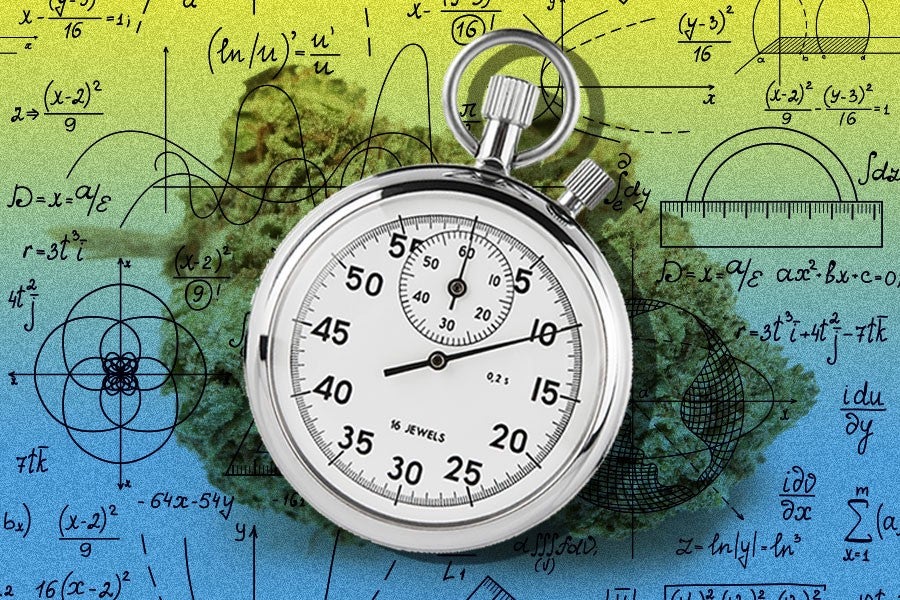Here’s a situation every novice marijuana enthusiast can relate to: You feel nothing two hours after eating an edible, so you double the dosage (naturally). A few minutes later, you spiral into an overwhelming, paranoia-filled high that feels like you’re diving 420 miles per hour into your couch cushions.
This issue with the unpredictability of edibles has long been accepted as unchangeable. Some companies even rely on it. Case in point: Mary’s Medicinals developed a post-weed tonic to counteract the negative effects of too much marijuana.
But a new solution looms on the hazy horizon: Colorado marijuana edibles company 1906 recently introduced a line of fast-acting edibles that take effect within just 20 minutes. To achieve such speeds, their scientists used a process called microencapsulation (a method frequently practiced by Big Pharma): In this, the cannabinoids in the marijuana are coated with fat globules, which the body is able to absorb more quickly.
To learn more about the inspiration and science behind getting people high at lightning speeds, we picked the brain of 1906’s chief scientist, Justin Kirkland.
Why Fast-Acting Edibles Are Safer (and More Pleasant) Edibles
“They help avoid the overdose issue,” Kirkland emphasizes. “One of the first terrible news articles that came out of Colorado was about a college student who overdosed on an edible, then jumped off a balcony to his death. In response, we discussed the possibility of developing low-dose edibles. But with improved bioavailability, we decided that you can regulate the experience similar to alcohol: You have a glass of wine, then you feel a certain way — and you don’t wait an hour to feel that way.”
This is helpful not only for preventing horrific incidents like that noted by Kirkland, but also for providing the average user with an experience more tailored to their liking: You can judge how stoned you are after just 15 minutes, then decide whether or not you continue to indulge (rather than doubling your dosage after feeling nothing, then realizing you overdid it).
How Fast-Acting Edibles Get You Stoned So Fast
As mentioned above, Kirkland used a process called microencapsulation to produce edibles for 1906. Here’s how that looks: “The first thing we did was pick a library of fatty food products: Coconut oil, sunflower oil and a variety of different oils with different fatty makeups,” Kirkland explains. “Then we dissolved the cannabinoids — both the THC and CBD — into equal potencies, and proceeded to solubilize them into fat. From there, we actually disperse the fat — it’s all kitchen chemistry, in the sense that we’re trying to take a pretty intense concentration of fatty liquid and disperse it over solid particles to spread it out.”
In plain English, they’re coating small (but specific) doses of cannabinoids in fat, which the body is able to absorb more quickly than standard edibles infused with straight-up cannabis concentrate.
“We then subject that to a specific range of temperatures,” Kirkland says. “This aligns the fats and drives the product out, almost like tempering chocolate. Next, we double-check the potency before blending it into 55- or 85-gallon tanks of chocolate, where it’s deposited into molds.”
Why Fast-Acting Edibles Are More Than Just Speed Alone
“We also did some intestinal permeability studies without the THC, and saw more of the drug make its way through the intestines,” Kirkland adds. “This means not only are you getting a quicker onset due to increased permeability, but you’re probably also getting a stronger effect because more of the drug is circulating.”
The process of microencapsulation and reheating also eliminates any cannabis flavors, according to Kirkland: “I’d love to take credit for this, but we accidentally also created a product with no cannabis flavor,” he says. “We ended up with a really luxurious piece of chocolate that you’d want to eat regardless of the cannabis content, and that was just a serendipitous side effect.”
The promise of fast-acting edibles doesn’t end there, either: “Early on, we screened a few other formulations that were even quicker,” Kirklands says. “For now, 13 minutes is where we’re at, and the goal is to continue to drop that. We actually think we can get down to single minutes as we continue to work on different formulations.”
All in all, the technology used to produce marijuana edibles is clearly catching up with high demand (resulting from expanded legalization). So stoners, prepare to get high in ways you never dreamt possible — or thought was the best idea ever while stoned.

